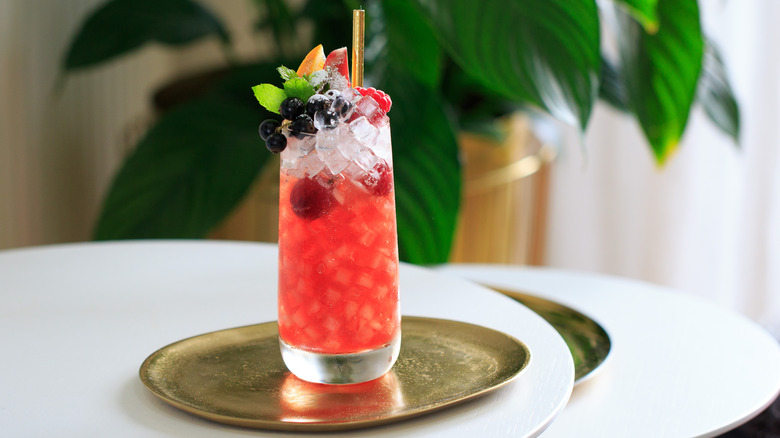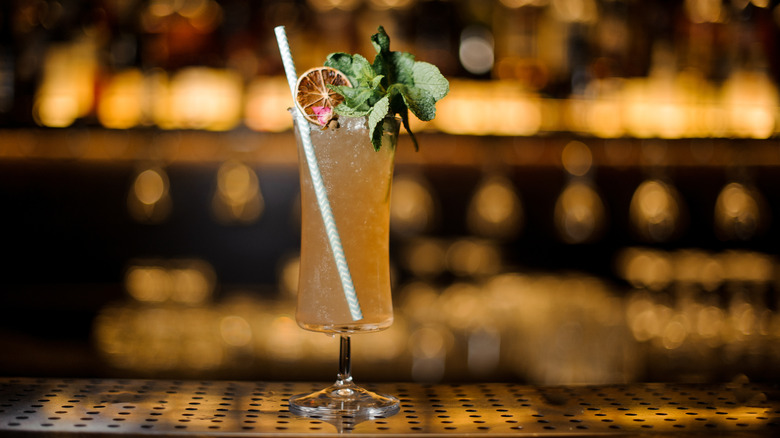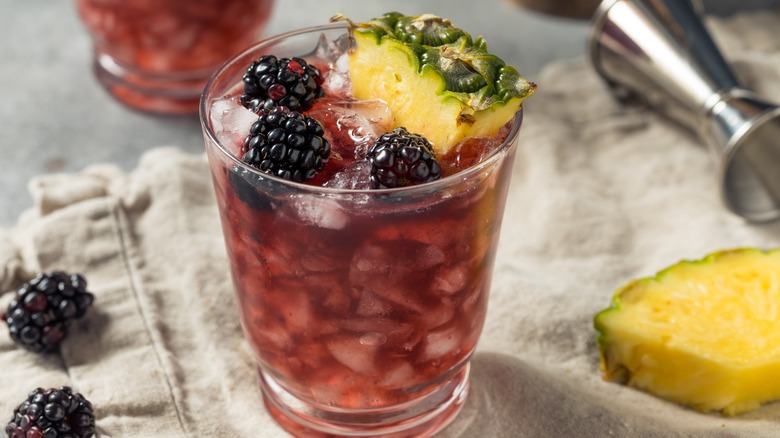What Are Cobbler Cocktails Anyway?
If you don't already know what a "cobbler" is in the context of drinks, the name probably won't be of much help. It has nothing to do with shoe repair, and little in common with crumbly, fruity desserts. Although cobblers — the cocktails — aren't among today's most well-known beverages, it turns out their creation marked a major moment in cocktail history.
The first "cobbler" was the Sherry Cobbler, which rose to popularity in the U.S. in the 1860s, and it was about as simple as could be: sherry, sugar, and a couple of orange slices, served over crushed ice, with a straw. Other variations arose until a "cobbler" was a bona fide category of cocktails, broadly referring to a shaken drink served over crushed ice in a tall glass, garnished with fruit, sugar, and mint, and served with a straw. Most cobblers use fortified wines like sherry or vermouth as their base, but some, like the Whiskey Cobbler, are made with spirits.
Although that description may sound vague, the crushed ice and inclusion of straws were what made cobbler cocktails novel, and important. The use of ice in alcoholic beverages was new to 19th-century America, only coming into practice about a decade before the cobbler's rise to prominence. The invention of straws (which, keep in mind, were most often made of actual straw or rye; the paper straw wasn't patented until 1888) made it possible to enjoy icy drinks in a dignified fashion, without pouring slush into your mouth.
Cobble it together
In addition to the straw, some beverage historians credit the Cobbler with an association with another important bar tool: the three-piece cocktail shaker, also known as the cobbler shaker. The cobbler shaker includes a strainer, allowing bartenders to shake a drink with ice to cool it down but keep the ice (and other large pieces, such as muddled fruit) separate, so the strained drink can be poured over fresh crushed — or "cobbled" — ice.
The original Sherry Cobbler recipe used just three ingredients plus garnish, and other early cobblers were similarly simple. There's some debate among bar professionals as to whether lemon or lime belongs in a "true" cobbler, with some saying that the drink's zing should come primarily from the base wine or spirit. The drink's history is only further confused by the fact that the orange slices used in the very first cobblers were allegedly more bitter than the oranges we know today, so some modern bartenders prefer to add a little more acidity to balance out the sweetness.
Garnishing history
Though cobblers continued to be a popular drink throughout the rest of the 1800s, the prohibition of the consumption of alcohol from 1920 to 1933 all but did them in. The cobbler is a drink that celebrates its alcohol base, with the addition of just a bit of sweetness and chill. During Prohibition, people were drinking a lot of subpar liquor, and the most popular cocktails of the time, such as the Bee's Knees, were created to make bad spirits taste better by masking imperfections, which was sort of the opposite of the cobblers' focus.
But the cobbler cocktails never fell completely out of public awareness, and today it's not at all uncommon for bars to offer their house cobbler concoctions, although these contemporary drinks tend to use more than three ingredients and are often very fruit-forward. Sometimes liqueurs or alternative sweeteners like honey are used in place of sugar. And though there's a ton of variation among modern cobblers, there are some constants: No matter what kind of cobbler you order or where you're drinking it, you can count on it to be sweet, beautifully garnished, and refreshingly cold.


